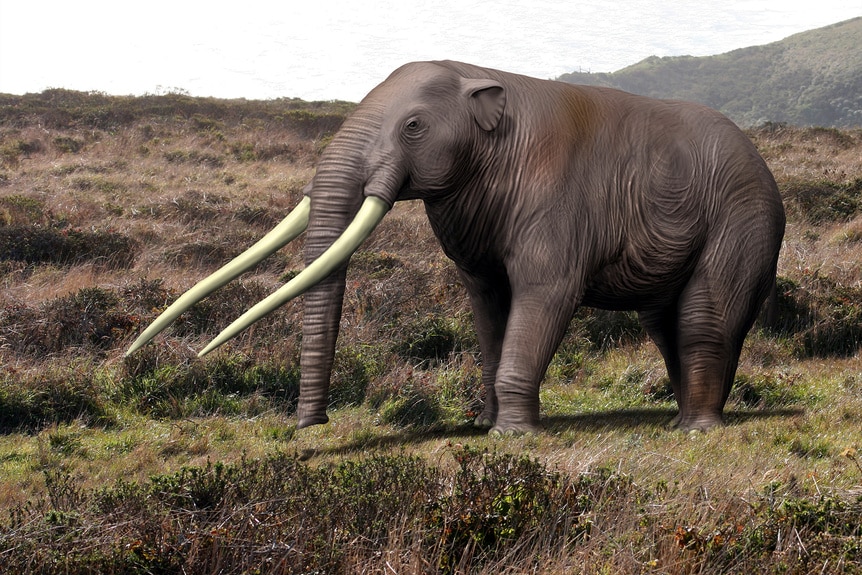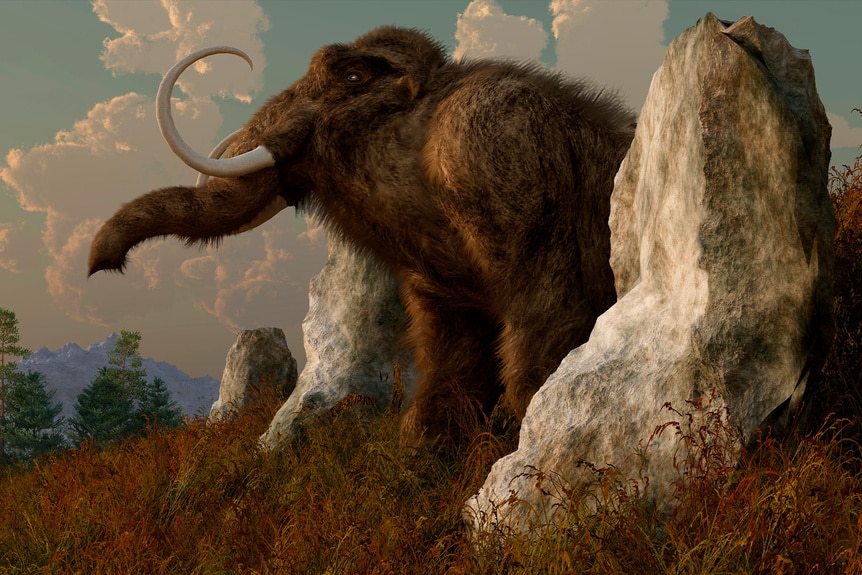Create a free profile to get unlimited access to exclusive videos, sweepstakes, and more!
Tusk from a Mastodon (the Mammoth's Smaller Cousin) Found off Florida Coast
Here's how you can tell the difference between mastodons and the more famous mammoths.
By the time the credits roll on Jurassic Park, Dr. Alan Grant (Sam Neill) has been reassured of one thing, the best (and safest) way to study prehistoric creatures is by digging up their bones. In the real world, paleontology and genetics often go hand in hand, each informing the other. And while outfits like Colossal Biosciences are hard at work figuring out how to resurrect some of our recently lost megafauna, for now at least, most of the big discoveries happen outside of the lab.
Just ask Florida fossil hunter Alex Lundberg, the proud recent discoverer of an astonishingly complete fossil mastodon tusk. Lundberg grew up hunting fossils with his father, reports the New York Post, and when he started scuba diving 12 years ago, he took the hobby from land to sea. Recently, he found the ultimate in prehistoric sunken treasure while searching for fossils off Florida’s Manasota Key.
While finding fragmented bits of mastodon tusk isn’t terribly uncommon, finding such a large intact piece doesn’t happen every day. Under Florida state law, fossil hunters can keep any vertebrate fossils they find, provided they’ve obtained a permit, and the specimen isn’t deemed scientifically important. If the tusk is determined to be of scientific interest, Lundberg will have to donate the specimen, otherwise he plans to keep it.
For More on Fossils:
These Prehistoric Plant Fossils are Actually Baby Turtles in Disguise
Scientists Pull Gigantic Prehistoric Sea Monster Skull from Dorset Cliff Face
The Oldest Fossilized Skin Ever Found Predates the Dinosaurs
Mastodon vs Mammoth, How to Tell Them Apart
Mastodons (pictured above) are often confused with their more popular cousins, the mammoths (pictured below). Alongside living elephants, both are members of the order Proboscidea (a reference to their proboscis-like trunks), which includes more than a hundred species over the last 60 million years. On the surface, mastodons and mammoths look pretty similar, but look a little deeper and you’ll find some pretty big differences. If you’re out hunting for some fossil treasures of your own, here’s how you can tell them apart.
While mammoths and mastodons are both relatives of elephants, they split from their living relatives at vastly different times. Mammoths split from elephants only about 5 million years ago, that’s roughly equivalent to the divergence time between humans and chimpanzees. Mastodons, by contrast, cut their own evolutionary path about 25 million years ago. They are both cousins to elephants, but one is a distant cousin, and that distance shows up in some of the mastodons' traits.
Mastodons showed up in the Americas about 4 million years ago and they disappeared about 10,500 years ago. Most mammoths died out around the same time, though a small population persisted on Wrangel Island until about 4,000 years ago. While both were hairy, mastodons were shorter and stockier, topping out at about 10 feet. Mammoths could get a few feet taller and sported a knob on top of their heads resulting from a bony protrusion.
Both had tusks sprouting from their faces, but mastodon tusks were typically shorter and relatively straight. Mammoth tusks grew long, curled inward, and sometimes crossed in front of one another. Mastodons may have had less impressive tusks, but they made up for it by occasionally growing a third, smaller tusk from their chins. Look behind those tusks and you'll find dramatically different teeth, revealing differences in their diets and lifestyles.
Mammoths were grazers and sported flat smashing teeth which crushed grass into bits like a mortar and pestle. The diet of mastodons is revealed by their name, which comes from the Greek “mastos” meaning breast, and “odous” or “odont” meaning tooth, referring to the nipple-like shape of the projections on their teeth. Mastodons were wood browsers and those pointed tooth cones were used for shredding through twigs, shrubs, trees, and other hardy plant matter. Considering how strange and wonderful mastodons were, it's nice to see them get their day every once in a while.
Visit prehistory with Jurassic Park, streaming now on Peacock!
































